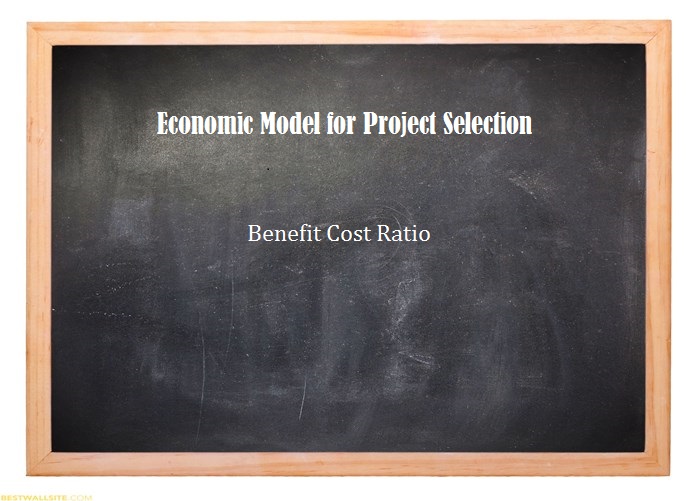The benefit cost ratio is yet another economic model of project selection. In this economic model, you calculate the ratio between the cost of the project and benefits form the project. The benefits include all forms of revenue you generate from the project and not just the profits. A benefit cost ratio greater than one indicates that projects generates more benefits than the cost incurred.
You use the benefit cost ratio method to identify relationship between possible benefits and costs of the project. You use this method to measure qualitative as well as the quantitative factors. This is so, because at times you cannot exclusively measure benefits and costs in financial terms.

You calculate the benefit cost ratio by dividing the total discounted value of the benefits by the total discounted value of the costs. To calculate the discounted value of each, you use the present value formula for the each. To know more about calculating present value, refer Economic Model for Project Selection – Present Value.
The following table interprets the value of the benefit cost ratio:
| Benefit Cost Ratio | Interpretation |
| > 1 | Benefit cost ratio of more than one indicates that the present value of the benefits is better than the present value of the costs. If the benefit cost ratio is significantly greater than one, then you can consider taking up the project. |
| = 1 | Benefit cost ratio equal to one indicates that the present value of benefits is equal to the present value of costs. For a project with benefit cost ratio equal to one, you can expect that the project would neither generate any profit nor would run under any losses. |
| < 1 | Benefit cost ratio of less than one indicates that the present value of benefits is less than the present value of costs. You should never consider a project that has benefit cost ratio less than one because it is almost sure that the project will incur losses. |
For example, you need to invest $ 10,000 in a project that is expected to generate revenues worth $ 5,000 for each year in next three years starting the third year of the project. To decide if you should consider this project, you need to calculate the benefit cost ratio, considering that the prevailing rate of interest is 10%.
To calculate the benefit cost ratio, you first need to calculate the present value of benefits as well as costs.
Present value of costs = $ 10,000 (You make an outright investment at the beginning of the project.)
Present value of benefits = 5,000 / (1.1)3 + 5,000 / (1.1)4 +5,000 / (1.1)5
= 3,756 + 3,415 + 3,104
= 10,275
Benefit cost ratio = Present value of benefits / present value of costs
= 10,275 / 10,000
= 1.0275
Notice that the benefit cost ratio for the project is marginally more than one. Therefore, you can expect very low amount of profits from this project. If any of the candidate projects has a better benefit cost ratio, you should not consider this project.
You can use this method to compare the benefit cost ratio of the candidate projects and select the one that has a benefit cost ratio better than other projects, and is significantly greater than one. Additionally, you can use this method to make other decisions when making an investment. For example, if you need to consider outright purchase of the equipment with respect to leasing the same for the project, you can use the benefit cost ratio to analyze which investment option is better to select.
